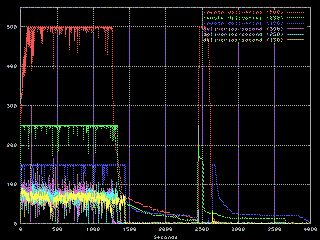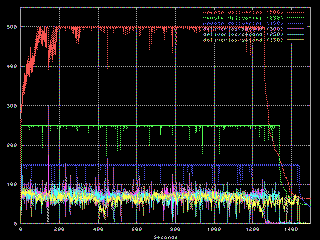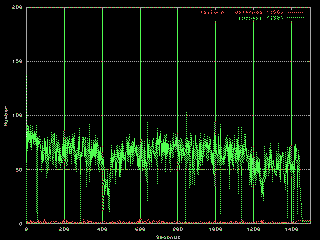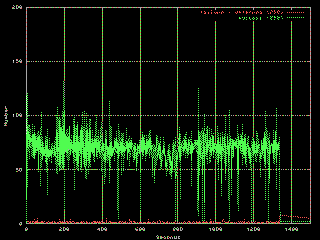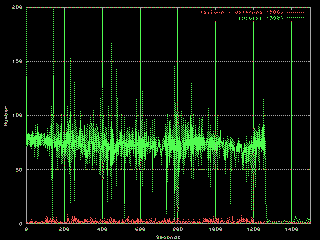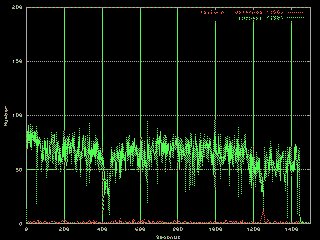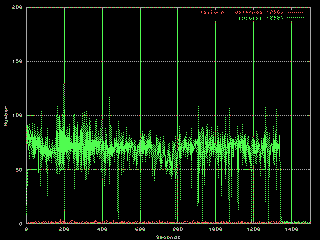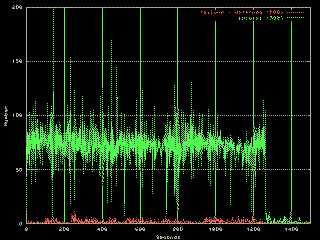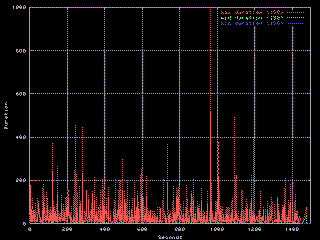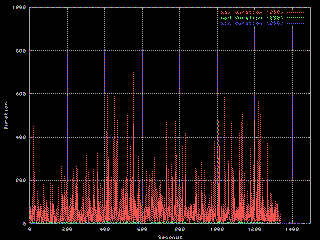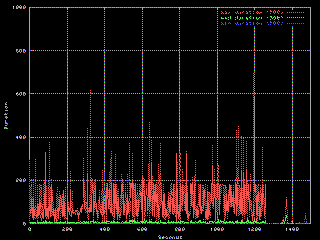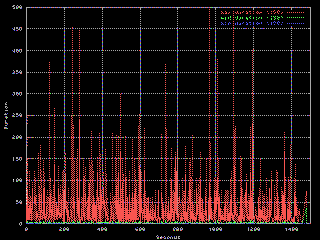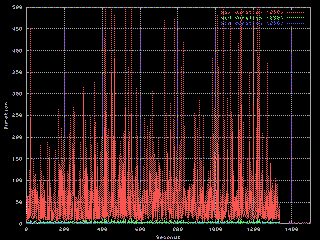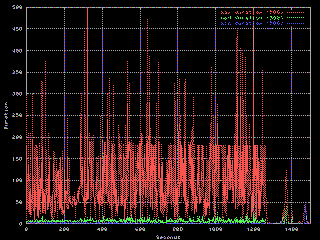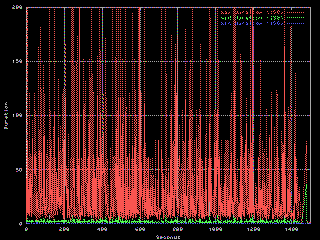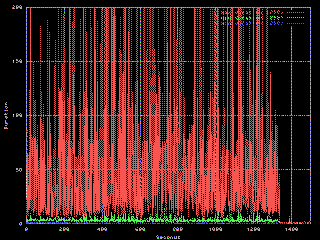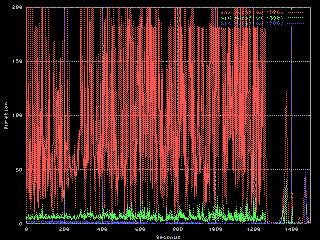qmail delivery statistics
The following graphs show the qmail-1.03 delivery behaviour, sending about 93,000 messages of a weekly newsletter list, injected by ezmlm-0.53 + ezmlm-idx-0.40.
The comparison is done for a delivery cycle with concurrencyremote set to 500, 250 and 150. The data is taken from three successive delivery cycles (each 1 week later, list has lost about 1% (i.e. 1000) of subscribers with each successive cycle).
All the graphs start at the time the message was injected by ezmlm.
Some bandwidth information for the 150 data
This graph shows bandwidth consumption during the delivery. The graph is generated from 3-minute probes taken from the machine with the command
netstat -biI <eth_if>The x-axis is the time of the day (i.e. 12:00 p.m. to 15:00 p.m.), the y-axis is median bandwidth consumption per 3 minute intervals calculated to KBytes/second.
Thus one can see from the graph that the maximum bandwidth consumption has been at around 6 Mbps. The machine has a 100 Mbps 3Com card and is well connected to a 100 Mbps switch. Our backbone is multihomed with lines in the range of 34 Mbps - 150 Mbps. Network congestion should not be a limiting factor here.
(Sorry, I don't have bandwidth info for the 250 and 500 data).
|
Bandwidth consumption (KBytes/s)
(click images to enlarge) |
|---|
| concurrencyremote 150 |
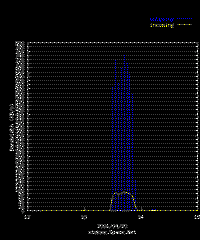 |
Some additional information from the 500 data
- qmail has finished the first delivery cycle after about 2500 seconds (40 minutes).
- at that time 90800 messages have been successfully sent.
- messages have been sent to 5400 unique ip addresses
- there is one IP address that had received 20303 messages
- 90% of all messages are sent to only 300 unique IP addresses
- that means that 90% of all messages got delivered to only 5.5% of all hosts.
To generate the following graphs I have counted the number of deliveries per each unique IP address and sorted them descending by this number. For the graphs I have used these data series and successivly summed up the number of IP addresses and the number of deliveries.
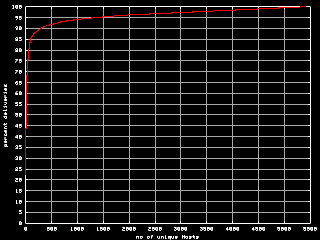 |
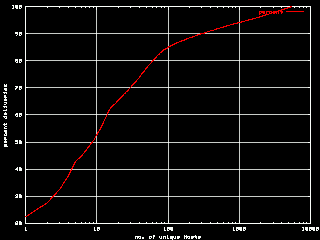 |
|
x-axis: no of unique IP addresses (linear)
y-axis: percentage of deliveries (linear) |
x-axis: no of unique IP addresses (logarithmic)
y-axis: percentage of deliveries (linear) |
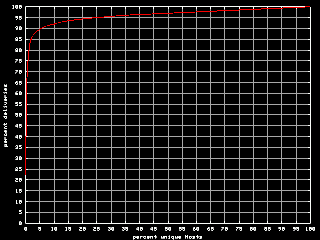 |
|
|
x-axis: percentage of unique IP addresses (linear)
y-axis: percentage of deliveries (linear) |
System information
FreeBSD 3.4-RELEASE
qmail-1.03 + bigconcurrency modifications (concurrencyremote=500)
ezmlm-0.53 + ezmlm-idx-0.40
Thanks to
CPU: Pentium III (551.25-MHz 686-class CPU)
real memory = 268435456 (262144K bytes)
ahc0:
ahc0: aic7890/91 Wide Channel A, SCSI Id=7, 16/255 SCBs
da0 at ahc0 bus 0 target 0 lun 0
da0:
da0: 80.000MB/s transfers (40.000MHz, offset 31, 16bit), Tagged Queueing Enabled
da0: 30000MB (61440000 512 byte sectors: 255H 63S/T 3824C)
xl0: <3Com 3c905B-TX Fast Etherlink XL> rev 0x30 int a irq 12 on pci0.9.0
xl0: autoneg complete, link status good (full-duplex, 100Mbps)


